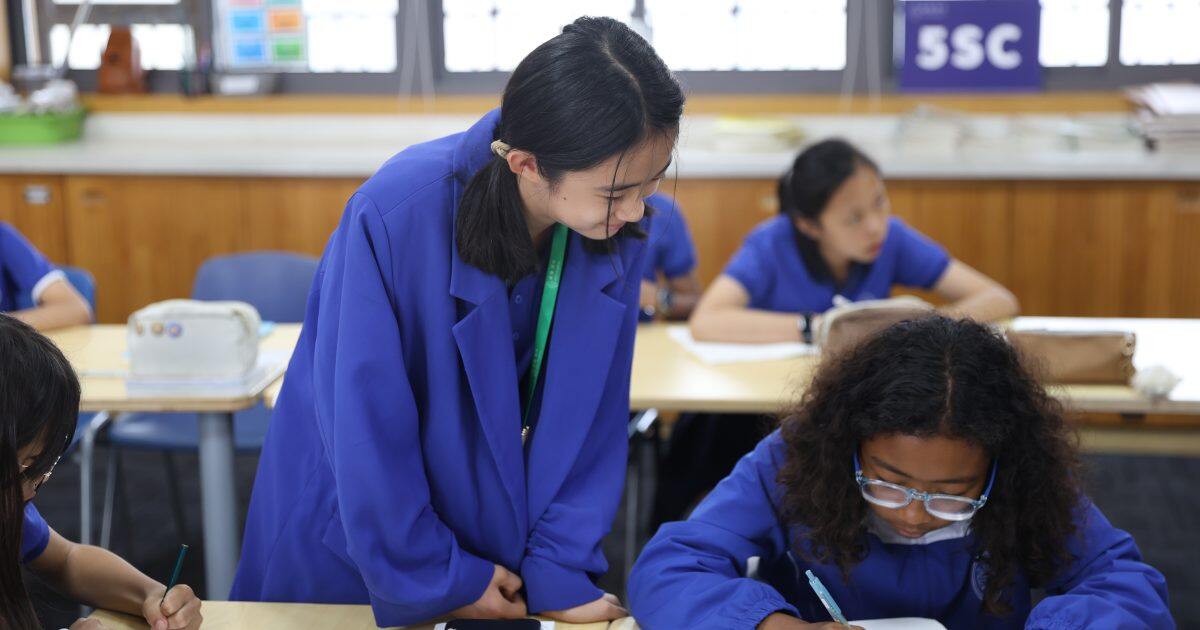Click the link to view the full version: WASCZ丨Engineering, Design & Technology—Unlocking Maker Fantasies
Engineering, Design & Technology—Unlocking Maker Fantasies
Working in groups, they showcased their imaginative ability under the given theme of “Smart Garden Irrigation System.” Using micro:bit or other microcontrollers, they designed and constructed devices capable of efficiently detecting soil moisture and watering plants accordingly, ensuring optimal water usage and plant health. Some students even developed smart home systems and visualized games, all of which were truly astonishing.
1. Armed with EDT, thinking like engineers to face the battles of the future.
“It’s already the 21st century, and we need to teach students skills relevant to the 21st century, laying a solid foundation for their future learning and career development. So, they need to stay in tune with the ever-evolving world and continuously enhance their problem-solving abilities, such as learning programming,” said Mr Shaikh, the Director of STEAM Innovation at WASCZ.
Mr Shaikh revealed that WASCZ plans to offer the IGCSE Design and Technology course within the next two years, stating, “We can’t suddenly introduce a postgraduate course and expect students to start learning in a bewildered state. The EDT course will serve as a bridging course for students to enter the IGCSE learning stage, helping them transition smoothly.”
“Our focus at this stage is to make students feel comfortable and adept at using these technologies,” emphasized Mr Shaikh on the importance of cultivating programming thinking in students at an early age. “The performance of students at the first semester EDT Fair may seem a bit early, but most importantly, we aim to build confidence in students through this event.”
In the previous semester, students mainly learned technical drawing and CAD (computer-aided design software), creating and modifying projects with micro:bit and various electronic modules, as well as some simple 3D design. This semester, they will begin studying the third module—game design.
Why are children mostly obsessed with gaming but lack interest in learning? Mr Shaikh has his unique understanding, “Games have engaging storylines, numerous instant rewards, and honours. The dopamine released during gaming gives students a sense of achievement, satisfaction, and happiness. These are feelings that traditional courses struggle to provide. Students can’t help but want to continue experiencing this joy, which is why they often lose track of time when gaming.”
“We integrate the underlying logic of gaming with programming and provide students with many free resources. They can use programming skills to independently design games, exchange games with peers, and complete them.”
From 2D to 3D, whether it’s AutoCAD widely used in civil engineering, interior decoration, industrial drawing; SketchUp for house and architectural sketches; VR creation tool Gravity Sketch; 3D printers and laser cutters… We spare no effort in providing resources for students. This aligns perfectly with the first three modules of the British Design and Technology (DT) curriculum—Designing, Making, and Designing and Making.
Additionally, WASCZ extracurricular enrichment course, Master Chef, also aligns with the fourth module of the British DT curriculum—Food and Nutrition. In class, Ms Francesca leads students in studying culinary arts and nutritional balance every week. Mr Shaikh also revealed plans to introduce a high school extracurricular course related to laser cutting and open a VR laboratory in the next academic year. Thus, diverse teaching environments permeate WASCZ EDT education, harnessing the strengths of various approaches.
Although formal EDT study begins in Grade 7, students have had many opportunities to gradually try their hand at micro:bit and advance to Arduino since Lower School. “Although micro:bit has a low entry threshold, the depth of learning is endless, serving as an important gateway to the vast worlds of programming and electronics.” Whether it’s building a quadcopter, playing piano with bananas, or presetting a reminder sound for when coffee is brewed… At WASCZ, armed with programming skills, thinking like engineers, anything is possible.
Unleashing endless possibilities for makers. They are striving to transform the world for the better!
In response to the concept of instantaneous speed in IGCSE Physics classes, some students successfully assembled timing gates using micro:bit to assist in learning; Some students are also very interested in the currently popular artificial intelligence, researching facial/voice/motion recognition access control systems. Mr Shaikh is very excited to see students’ research on AI from different perspectives of humans and machines.
However, to solve real-world problems, it’s not just about creating products for specific groups; what’s important is the story behind the design. Furthermore, when testing doesn’t meet design expectations, it’s more important to diagnose problems, troubleshoot, and iterate upgrades. Through the process of learning, designing, and manufacturing, students enhance their independence and problem-solving abilities. This is the philosophy of the EDT course.
Mr Shaikh, who has amassed years of teaching experience, has noted that Chinese students typically excel in areas such as embedded programming and text programming. However, he observes that their most significant challenge lies in the realms of innovation—specifically, in thinking about transformation, change, and upgrading existing concepts. Fortunately, there has been a remarkable evolution in this regard; we have seen students’ insights burgeon into boundless creativity, offering new perspectives and solutions for the world.
In their exploration of fencing, some students ingeniously applied programming principles to liberate themselves from the constraints of the traditional hand rope. This innovative approach significantly enhanced their enjoyment and the dynamic expression of the sport. Meanwhile, others ventured into the realm of interpersonal communication by developing a smart ID card. This card, designed to foster positive social interactions, projects affirmations, greetings, and encouraging phrases like, “Hi, you are fabulous!” and “Have a good day!” This invention stems from the recognition that the rapid pace of modern life often distances individuals from one another, highlighting the importance of mutual encouragement and unreserved commendation in every encounter.
Further embodying this innovative spirit, a group of students has initiated a project focused on promoting etiquette through a reminder system for the school canteen’s tableware recycling process. This system thoughtfully alerts students if they fail to sort their tableware properly, integrating environmental stewardship with daily practices.
These endeavours reflect a collective aspiration among the students to creatively engage with and positively transform the world around them, showcasing a vibrant tapestry of maker fantasies.
Mr Shaikh shared an insightful observation regarding the gender dynamics within the global STEAM field. He noted the conspicuous absence of female leaders, particularly in engineering, computer science, and hardware development, despite girls exhibiting a keen interest and comparable proficiency in these areas. He highlighted that in design, the nuanced aesthetics and innovative approaches often introduced by female students can significantly enrich a project. This observation underscores the challenges and systemic barriers female scholars encounter in the STEAM domain. However, it also reinforces our commitment at WASCZ to dismantling societal stereotypes and ensuring that both boys and girls have equal opportunities to showcase their talents and potential.
At WASCZ, we are inspired by the limitless creativity, dedication, and ambition of these young innovators. Their endeavours, driven by a profound care and love for the world, act as wings that propel them forward, nurturing and enhancing our global community for the better.
More News



